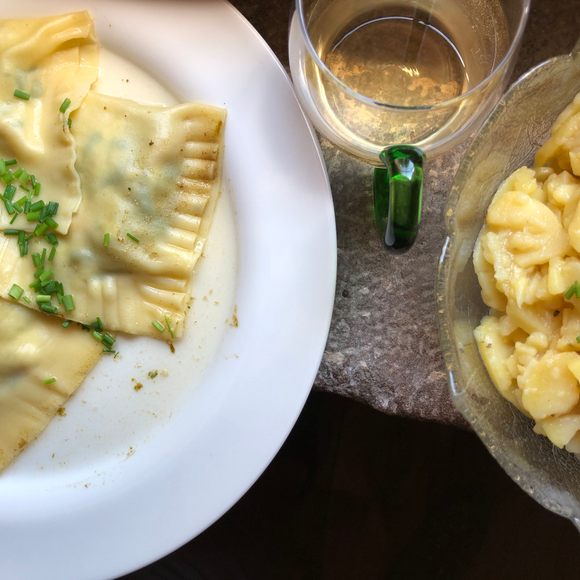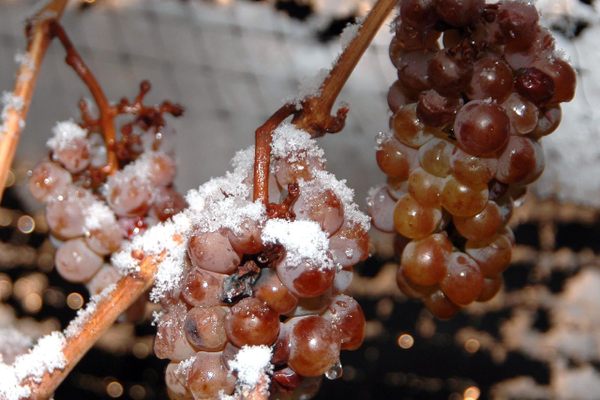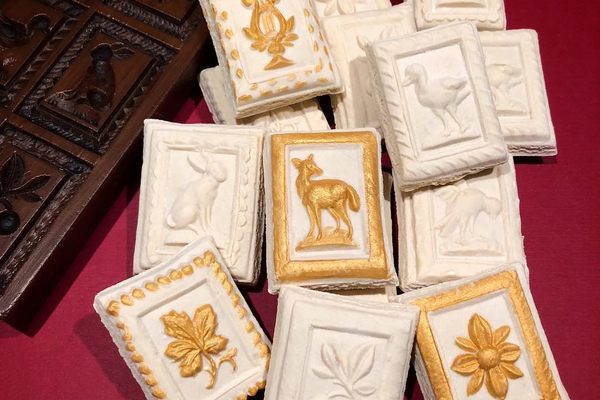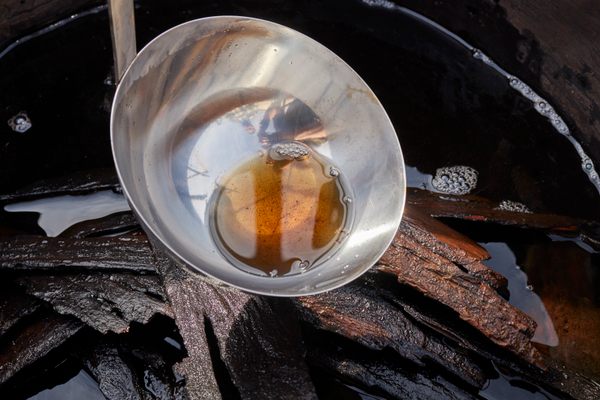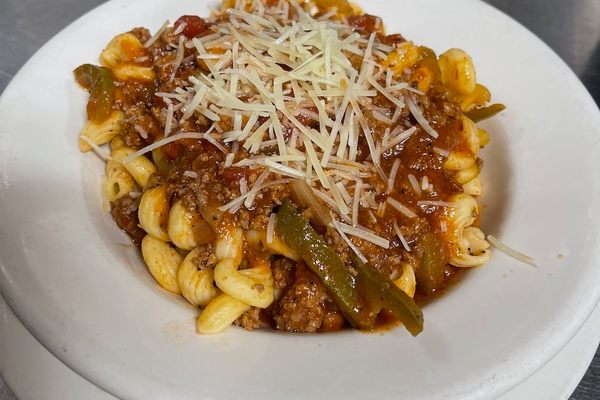The origins of Germany’s Maultaschen are deliciously devious. Legend has it that, in the late Middle Ages, a lay brother named Jakob invented the stuffed pasta dumplings at the Maulbronn Monastery, a UNESCO World Heritage site founded in 1147 by Cistercian monks in southwest Germany.
One direct translation of Maultaschen is “mouth pockets,” though “Maul” could just as easily refer to Maulbronn. Maultaschen are usually square dumplings (though sometimes they’re rolled) and can be fried in a pan or served in broth. Commonly described as Germany’s version of Italian ravioli, they allegedly emerged as a way to use up an unexpected bounty of meat that Brother Jakob stumbled upon in the forest outside the monastery walls.
The twist? Although they abhorred waste, these monks weren’t allowed to eat the meat of four-legged animals, especially during the Catholic fasting period of Lent in the spring. So Brother Jakob minced the meat with herbs and onions and wrapped everything inside pasta dough, hiding the forbidden flesh from the eyes of his fellow monks—and even from the eyes of God.
In Swabia, the region encompassing much of Baden-Württemberg and part of Bavaria where Maultaschen originated, one of the colloquial names for the food references this deception directly: Herrgottsbescheißerle means “little God-cheaters.”
Everyone in Swabia has their version of the legend with more or less embellishment. Ludwig Nestler holds a master’s degree in heritage conservation and works for the State Palaces and Gardens of Baden-Württemberg, a government organization that oversees monuments like Maulbronn Monastery. His version of the tale includes a sack of stolen meat dropped in the woods by a fleeing thief, which inspires Brother Jakob’s trickery in the kitchen. But he acknowledges that there’s no undisputed “historically correct version” of how Maultaschen came to be. Similarly, everyone in Swabia has their own Maultaschen recipe, with unique ingredients for the minced filling, called Brät.
“Traditionally the Brät is made from pork mixed with herbs, onions, and occasionally bread crumbs for texture and stability,” says Nestler. Swabia, however, “was a rather poor region with limited amounts of meat due to rather unfertile land, so being adaptive and innovative has always been a part of the people’s nature.” As Maultaschen became popular, fish and seasonal vegetables like spinach, carrots, beets, and mushrooms became common inclusions.
Today, the European Union ties Maultaschen to Swabia with a Protected Geographical Indication, which lists required ingredients the authentic product should feature, but even the necessary inclusions are pretty loose, such as “pork and/or beef and/or veal” for meat Brät and “typical regional vegetables” for meat-free Brät. It speaks to the way the dumplings developed as subsistence food, used to stretch leftovers and reduce food waste.
Today, Germans throughout the country enjoy Maultaschen in dozens of flavors in all seasons thanks to grocery stores that stock packaged varieties made by companies like Ditzingen-based Bürger, whose mascot, Erwin, is a Maultasche (the singular form of the plural Maultaschen).
But the dumplings remain most popular in southern Germany. Maulbronn Monastery offers a special tour that pairs Maultaschen with wine from the monastery’s vineyards. And many locals, including Nestler’s family, still make them from scratch on special occasions—even during Lent, when meat might otherwise be off the menu. There’s no telling if it’s a fraud good enough to fool God, but it’s worth a shot.
Where to Try It
-
Klosterblick Website
Stuttgarter Straße 22, Maulbronn, 75433, GermanyPer the name, which translates to “monastery view,” Klosterblick overlooks Maulbronn Monastery from across the street. This decades-old restaurant serves Maultaschen filled with veal or vegetables, pan-fried or in broth, made from scratch by an in-house side business called Mama Lemonias Maultaschen-Manufaktur, which also sells the dumplings packaged to go or shipped throughout Germany.
-
While Maultaschen aren’t common in the U.S., they sometimes appear as specials at German restaurants, and Stammtisch keeps them on the regular menu, stuffed with sauteed leeks and cheese and served with white wine sauce.
Written By
 Adam H Callaghan
Adam H Callaghan



